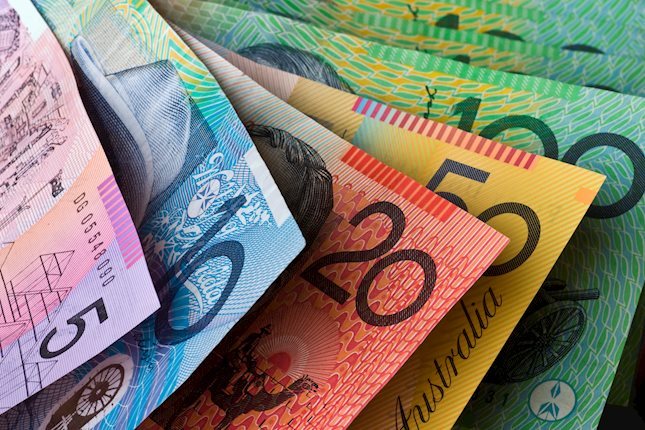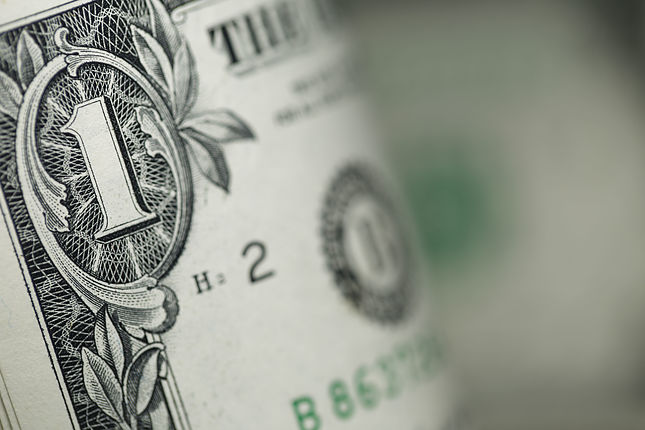- EUR/USD appreciates despite a negative bias amid the cautious US Federal Reserve.
- Fed Chair Powell stated that the economy is not sending any signals that we need to lower rates quickly.
- The headline inflation in the Euro Area is projected to drop sharply to 2.4% in 2024, from 5.4% in 2023.
The EUR/USD pair trades around 1.0550 during Monday’s Asian trading session, hovering near its yearly low of 1.0496, which was reached on November 14. Downside risks for the pair have intensified following cautious comments from Federal Reserve (Fed) officials and stronger-than-expected US Retail Sales data, broadly supporting the US Dollar (USD).
Last week, Fed Chair Jerome Powell tempered expectations for imminent rate cuts, emphasizing the economy's resilience, a strong labor market, and persistent inflationary pressures. Powell stated, "The economy is not sending any signals that we need to be in a hurry to lower rates."
The CME FedWatch Tool indicates that markets are pricing in nearly a 60% probability of a 25-basis-point rate cut by the Fed at its December meeting.
The US Census Bureau reported on Friday that Retail Sales increased by 0.4% month-over-month in October, exceeding the market consensus of 0.3%. Additionally, the NY Empire State Manufacturing Index for November posted an unexpected surge, coming in at 31.2 compared to the anticipated 0.7 decline, signaling robust manufacturing activity.
The Euro faces continued downward pressure as the European Central Bank (ECB) maintains a dovish stance, with a policy rate cut expected at its upcoming December meeting. Headline inflation in the Euro Area is projected to drop sharply to 2.4% in 2024, down from 5.4% in 2023, before easing more gradually to 2.1% in 2025 and 1.9% in 2026.
The European Commission's Autumn 2024 forecast projects 0.8% growth for the Euro Area in 2024, unchanged from the Spring forecast. However, the 2025 growth forecast has been revised slightly downward to 1.3% from 1.4%, while the Eurozone economy is projected to grow by 1.6% in 2026.
EU Economy Commissioner Paolo Gentiloni stated, "As inflation continues to ease and growth in private consumption and investment gains momentum, alongside record-low unemployment, growth is expected to gradually accelerate over the next two years."
Euro FAQs
The Euro is the currency for the 19 European Union countries that belong to the Eurozone. It is the second most heavily traded currency in the world behind the US Dollar. In 2022, it accounted for 31% of all foreign exchange transactions, with an average daily turnover of over $2.2 trillion a day. EUR/USD is the most heavily traded currency pair in the world, accounting for an estimated 30% off all transactions, followed by EUR/JPY (4%), EUR/GBP (3%) and EUR/AUD (2%).
The European Central Bank (ECB) in Frankfurt, Germany, is the reserve bank for the Eurozone. The ECB sets interest rates and manages monetary policy. The ECB’s primary mandate is to maintain price stability, which means either controlling inflation or stimulating growth. Its primary tool is the raising or lowering of interest rates. Relatively high interest rates – or the expectation of higher rates – will usually benefit the Euro and vice versa. The ECB Governing Council makes monetary policy decisions at meetings held eight times a year. Decisions are made by heads of the Eurozone national banks and six permanent members, including the President of the ECB, Christine Lagarde.
Eurozone inflation data, measured by the Harmonized Index of Consumer Prices (HICP), is an important econometric for the Euro. If inflation rises more than expected, especially if above the ECB’s 2% target, it obliges the ECB to raise interest rates to bring it back under control. Relatively high interest rates compared to its counterparts will usually benefit the Euro, as it makes the region more attractive as a place for global investors to park their money.
Data releases gauge the health of the economy and can impact on the Euro. Indicators such as GDP, Manufacturing and Services PMIs, employment, and consumer sentiment surveys can all influence the direction of the single currency. A strong economy is good for the Euro. Not only does it attract more foreign investment but it may encourage the ECB to put up interest rates, which will directly strengthen the Euro. Otherwise, if economic data is weak, the Euro is likely to fall. Economic data for the four largest economies in the euro area (Germany, France, Italy and Spain) are especially significant, as they account for 75% of the Eurozone’s economy.
Another significant data release for the Euro is the Trade Balance. This indicator measures the difference between what a country earns from its exports and what it spends on imports over a given period. If a country produces highly sought after exports then its currency will gain in value purely from the extra demand created from foreign buyers seeking to purchase these goods. Therefore, a positive net Trade Balance strengthens a currency and vice versa for a negative balance.
Information on these pages contains forward-looking statements that involve risks and uncertainties. Markets and instruments profiled on this page are for informational purposes only and should not in any way come across as a recommendation to buy or sell in these assets. You should do your own thorough research before making any investment decisions. FXStreet does not in any way guarantee that this information is free from mistakes, errors, or material misstatements. It also does not guarantee that this information is of a timely nature. Investing in Open Markets involves a great deal of risk, including the loss of all or a portion of your investment, as well as emotional distress. All risks, losses and costs associated with investing, including total loss of principal, are your responsibility. The views and opinions expressed in this article are those of the authors and do not necessarily reflect the official policy or position of FXStreet nor its advertisers. The author will not be held responsible for information that is found at the end of links posted on this page.
If not otherwise explicitly mentioned in the body of the article, at the time of writing, the author has no position in any stock mentioned in this article and no business relationship with any company mentioned. The author has not received compensation for writing this article, other than from FXStreet.
FXStreet and the author do not provide personalized recommendations. The author makes no representations as to the accuracy, completeness, or suitability of this information. FXStreet and the author will not be liable for any errors, omissions or any losses, injuries or damages arising from this information and its display or use. Errors and omissions excepted.
The author and FXStreet are not registered investment advisors and nothing in this article is intended to be investment advice.
Recommended content
Editors’ Picks

AUD/USD holds the bounce toward 0.6500 amid mixed markets
AUD/USD remains on the front foot, looking to 0.6500 in Asian session on Monday. A broadly subdued US Dollar supports the Aussie but the further upside appears elusive as sentiment remains tepid ahead of Fedspeak and Tuesday's RBA Minutes release.

USD/JPY regains 154.00 and beyond amid BoJ's Ueda-led volatility
USD/JPY has recaptured 154.00 in Asian trading on Monday after BoJ Governor Kazuo Ueda's comments injected volatility around the Japanese Yen. Ueda offered no clues on a likely December interest rate hike, weigihing heavily on the Yen while triggering a big USD/JPY jump.

Gold extends recovery to test $2,600 amid renewed Russia-Ukraine tensions
Gold price (XAU/USD) extends its rebound to test $2,600 early Monday, snapping a six-day losing streak. The latest uptick in Gold price could be attributed to rsurfacing Russia-Ukraine geopolitical tensions after US authorizes Ukraine to use long-range US weapons to strike inside Russia.

Dollar rally 2024: Epic bull run or dangerous bubble?
Dear, The US dollar is surging—how high can it go? Is this unstoppable growth or a bubble about to burst? Discover the 5 key factors fueling this rally Watch, learn, and get ready for what’s next! .

Week ahead: Preliminary November PMIs to catch the market’s attention
With the dust from the US elections slowly settling down, the week is about to reach its end and we have a look at what next week’s calendar has in store for the markets. On the monetary front, a number of policymakers from various central banks are scheduled to speak.

Best Forex Brokers with Low Spreads
VERIFIED Low spreads are crucial for reducing trading costs. Explore top Forex brokers offering competitive spreads and high leverage. Compare options for EUR/USD, GBP/USD, USD/JPY, and Gold.